A web client submits a request to http://localhost:8081?accountType=personal. The query parameter is captured using a Set Variable transformer to a variable named accountType.
What is the correct DataWeave expression to log accountType?
A. Account Type: #[flowVars.accountType]
B. Account Type: #[message.inboundProperties.accountType]
C. Account Type: # [attributes.accountType]
D. Account Type: #[vars.accountType]
Explanation: vars: Keyword for accessing a variable, for example, through a DataWeave expression in a Mule component, such as the Logger, or from an Input or Output parameter of an operation. If the name of your variable is myVar, you can access it like this: vars.myVar Hence correct answer is Account Type: #[vars.accountType]
An API has been created in Design Center. What is the next step to make the API discoverable?
A. Publish the API to Anypoint Exchange
B. Publish the API from inside flow designer
C. Deploy the API to a Maven repository
D. Enable autodiscovery in API Manager
Explanation:
Correct answer is Publish the API to Anypoint Exchange
1) In private exchange for internal developers
2) In a public portal for external developers/clients
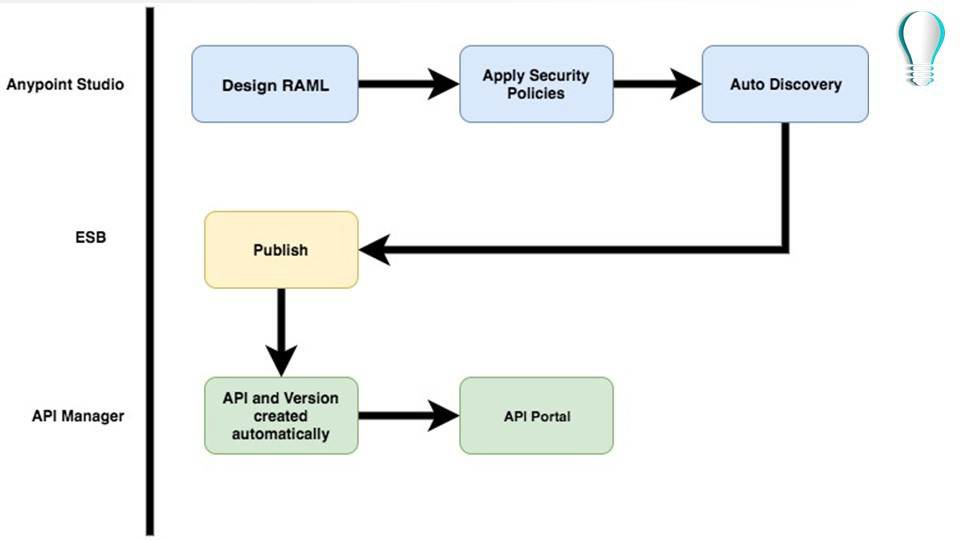
An On Table Row Database listener retrieves data from a table that contains record_id, an increasing numerical column. How should the listener be configured so it retrieves new rows at most one time?
A. Set the target to store the last retrieved record_id value
B. Set the ObjectStore to store the last retrieved record_id value
C. Set the target to the record_id column
D. Set the watermark column to the record id column
A web client submits a request to http://localhost:8081/books/0471767840. The value "0471767840" is captured by a Set Variable transformer to a variable named booklSBN.
What is the DataWeave expression to access booklSBN later in the flow?
A. booklSBN
B. attributes.booklSBN
C. flowVars.booklSBN
D. vars. booklSBN
Refer to the exhibit.
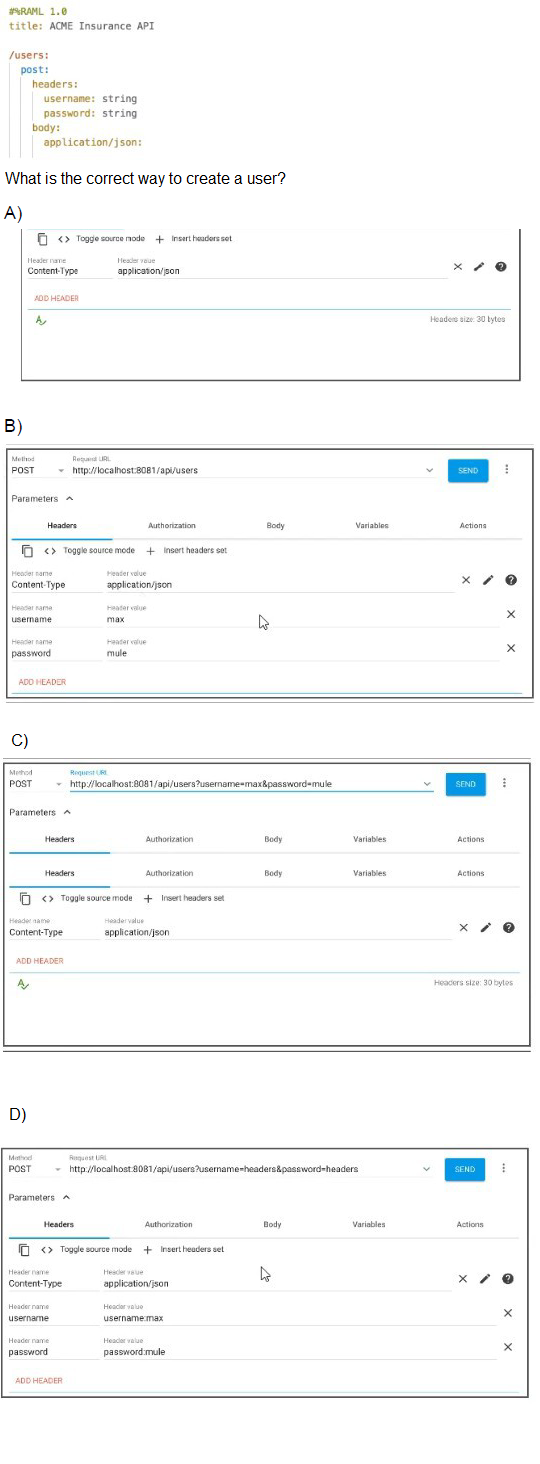
A. Option A
B. Option B
C. Option C
D. Option D
Refer to the exhibit.
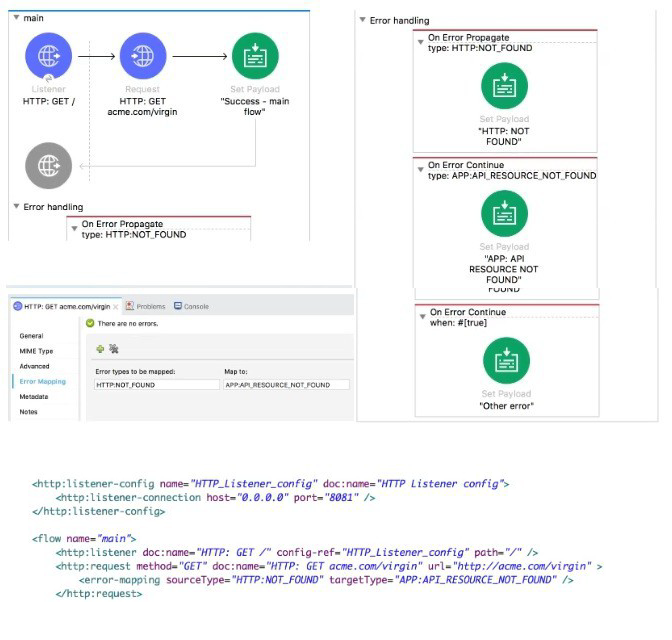
The main flow is configured with their error handlers. A web client submit a request to the HTTP Listener and the HTTP Request throws an HTTP:NOT_FOUND error.
What response message is returned?’’
What response message is returned?
A. APP: API RESOURCE NOT FOUND
B. HTTP: NOT FOUND
C. other error
D. success - main flow
Explanation:
Correct answer is APP: API RESOURCE NOT FOUND
1) A web client submits the request to the HTTP Listener.
2) The HTTP Request throws an "HTTP:NOT_FOUND" error, execution halts.
3) The On Error Propagate error Handler handles the error. In this case
,HTTP:NOT_FOUND error is mapped to custom error APP:API_RESOURCE_NOT_FOUND. This error processor sets payload to APP:API_RESOURCE_NOT_FOUND.
4) “APP:API_RESOURCE_NOT_FOUND. ” is the error message returned to the requestor in the body of the HTTP request with HTTP Status Code: 500
Refer to the exhibits.
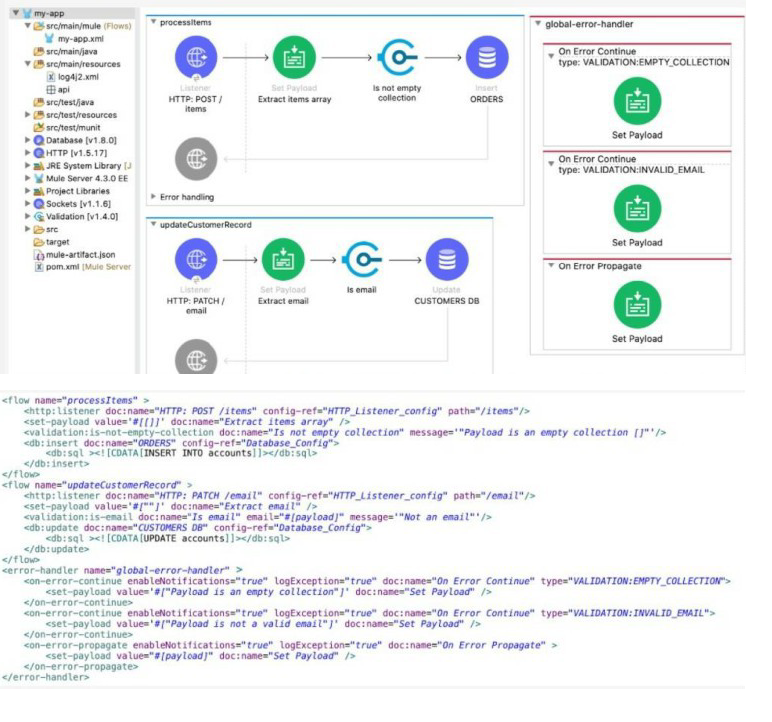
The my-app xml file contains an Error Handier scope named "global-error-handler"
The Error Handler scope needs to be set to be the default error handler for every flow in the Mule application
Where and how should the value "global-error-handler" be added in the Mule project so that the Error Handler scope is the default error handler of the Mule application?
A. In the mule-artifact json file, as the value of a key-value pair
B. In the Validation folder as the value of a global element in the error-handling yaml file
C. In the pom.xml file, as the value of a global element
D. In the my-app.xml file, as an attribute of a configuration element
Refer to the exhibits.
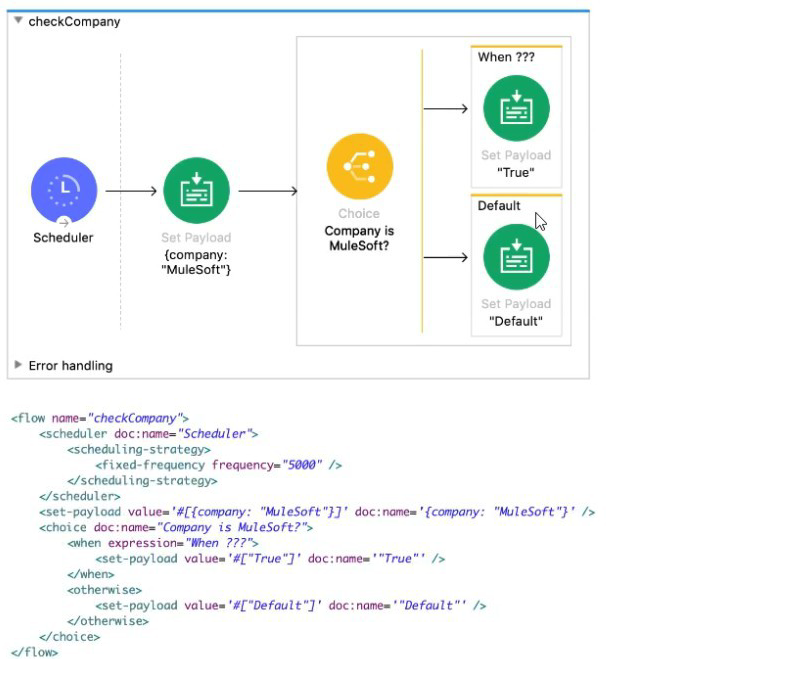
The
What is a valid
A. #['MuleSoft' == paytoad.company]
B. #[ company = "MuleSoft" ]
C. #[ if( company = "MuleSoft") ]
D. #[ if( 'MuleSoff == payload.company) ]
The new RAML spec has been published to Anypoint Exchange with client credentials. What is the next step to gain access to the API?
A. Request access to the API in Anypoint Exchange
B. Email the owners of the API
C. Create a new client application
D. No additional steps needed
Explanation: Correct answer is Request access to the API in Anypoint Exchange. This way we can get clientId and Client secret which we can use to access the API.
In the Database On Table Row operation, what does the Watermark column enable the On Table Row operation to do?
A. To avoid duplicate processing of records in a database.
B. To delete the most recent records retrieved from a database to enable database caching
C. To enable duplicate processing of records in a database
D. To save the most recent records retrieved from a database to enable database caching
Explanation: The correct answer is To avoid duplicate processing of records in a database. If a watermark column is provided, the values taken from that column are used to filter the contents of the next poll, so that only rows with a greater watermark value are returned. If an ID column is provided, this component automatically verifies that the same row is not picked twice by concurrent polls.
| Page 5 out of 24 Pages |
| Salesforce-MuleSoft-Developer-I Practice Test Home | Previous |